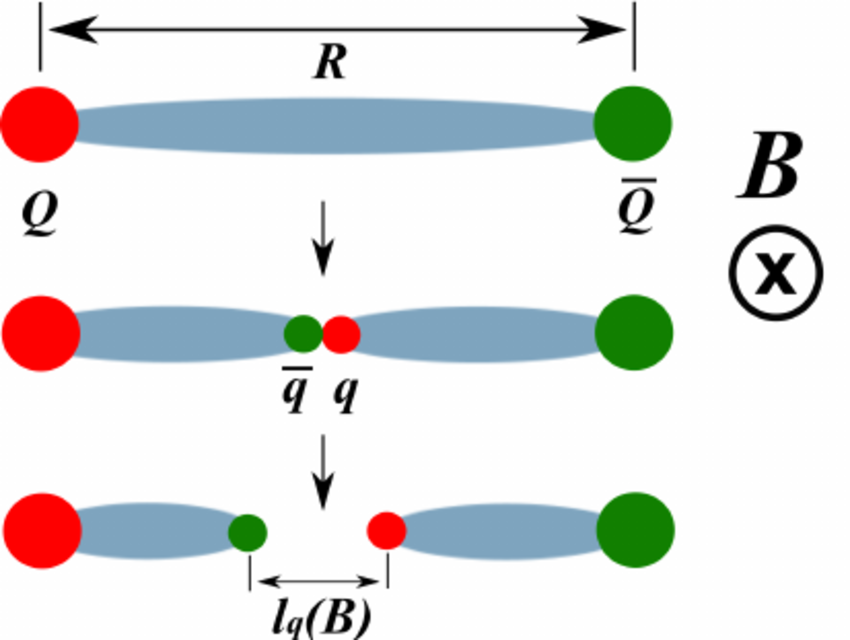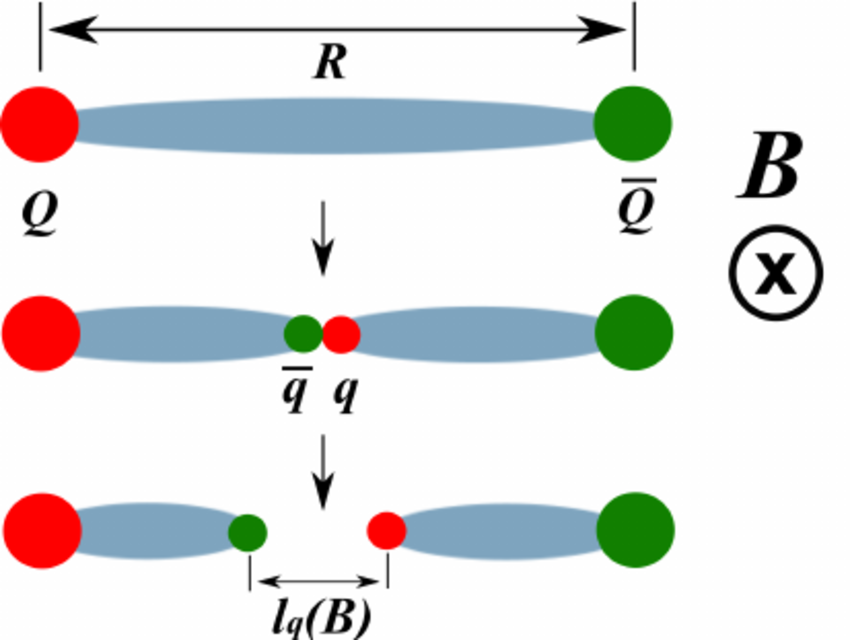A Brief Overview of Candidate Theories Of Everything
Microscopic strings, looped space, and eight dimensional spheres

Physics can be easily considered the most fundamental of the sciences: it can describe almost any phenomena Nature gives us. Gravity. Yes. Why does my coffee cool? Yes. Do atoms exist? Yes.
But internally, within the vast field there has been one lingering problem: two of the best theories physics has to offer are incompatible with each other. We have been trying to fix it; since the last few decades. But, there is only so far we can get.
That does not mean zero progress. In fact, some new theories have been proposed for fixing this huge problem. Here, we will look at some of them. But, before delving in, we need some background.
The Holy Grail of Physics — A Theory of Everything

Above are most of the pioneers of modern physics. In the front row, you can see Einstein, who discovered the General Theory of Relativity. It describes gravity as a feature of the geometry of space (and time) itself, and not as a force as Newton thought us.
According to general relativity, energy changes the geometry of space and time around it. This change in geometry causes straight lines to become curves. Other smaller objects travel along these curves, which is analogous to objects travelling in straight lines in normal in pre-relativistic physics: Newton’s first law. Newton said that objects which do not experience forces travel in straight lines. In relativity, the curved lines are straight lines, but in curved space. So, gravity is not a force at all!
So what we experience as gravity is just what we observe when objects follow Newton’s first law, but in curved space instead.
Most of the others in the above picture, are pioneers in another interesting theory: quantum physics. Quantum physics describes the nature of particles at a sub-atomic scale. Now, quantum mechanics is the most counter-intuitive topic out there, with plenty of resources explaining it pretty nicely.
In a nutshell, quantum mechanics states that the properties of every particle can be described with a wavefunction, which obeys a fundamental equation: the Schrodinger equation. A particle can have multiple values of a particular property, momentum for example. Each of these values are ‘embedded’ in the wavefunction; when we measure the particle it can take on any of these values.
Now, these are the two main pillars of modern physics: GR, the theory of gravity, which can be used to model entire universes; and QM, the theory of the smallest scales known to humanity, but which can explain everything except for one thing: gravity.
Yes. quantum mechanics and even its more accurate and powerful successor, Quantum Field Theory, could not describe gravity. But, there was already a theory of gravity: Relativity. Why not use that to describe even subatomic particles? That is what they tried out.
And they got a mess. the results tended to blow up to infinity; create singularities. It was just ugly. One thing became sure: the current view of the subatomic particles and the current view of gravity were incompatible. One of them had to be replaced by a better theory. Thus began the quest for the Theory of Everything: a fundamental theory which can explain both subatomic particles and gravity; both the tiny and enormous scales.
The search is still on. The Theory of Everything has been branded as the ‘holy grail of physics’, like ‘One theory to rule them all’. Right now, we do have some candidates, each with some pros and some cons, each with their own earth-shattering assumptions, conditions and predictions. However, none of them have been verified. Here we will look at some of the most plausible candidates. Here we go:
Candidate 1: String Theory
The most popular candidate is string theory. It was originally developed as a model for describing interactions between two quarks. But, when the calculations for the energy and dynamics of strings were done, the results yielded a massless particle of spin 2.

The massless, spin 2 particle was the hypothesized graviton: an undetected particle which mediates the force of gravity and is responsible for gravitational attraction.
This led physicists to speculate whether string theory could be a theory of quantum gravity (which basically means unifying gravity into the set of rules defined by quantum physics). And, they found if they allowed fundamental particles like electrons and quarks behave like microscopic strings, they could get the equations of general relativity without any further hustle.
This is why string theory is a very popular candidate: you just have to assume that fundamental particles consist of microscopic strings, and you get the equations for general relativity and quantum physics, together. Phew! That was easy.

But, there are cons: in fact 22 ones. The very simplest string theory, bosonic string theory requires 26 dimensions! 25 of space and 1 of time. How is that possible? String theorists would tell you that the additional dimensions are very microscopic, and they cannot be perceived by normal eyes, or even by current experiments. But, when you look at the level of strings, the microscopic dimensions are necessary for yielding the results we need.

As time passed, new versions of string theory started to come up. All of these had their own pros and cons, some requiring a lot many number of dimensions and some requiring just a few more than the normal (but still, all of them needed at least some more dimensions than 3d of space and 1d of time).
Soon, it looked like string theory was not one, but a zoo of a large number of various theories, all making the same assumptions, but having different requirements and assumptions. That is why we must look at another theory: M-Theory
Candidate 1.5: M-Theory
This is not an entirely different candidate: it is just the unification of all string theories. Hence, the 1.5. Edward Witten found out an interesting face about the various string theories: they had dualities.
Ver simply put, dualities are symmetric connections between two string theories. These connections could be used to bring all the various theories under one big umbrella.
This is what M-Theory did: it connected various string theories using the fact that many shared dualities. Enter a universal string theory; with only 11 dimensions, and with all the predictive power and accuracy of the collection of the various sub-theories. M-Theory, even today, is the most widely accepted string theory.
Returning back
So, M-theory is the string theory that is currently used to predict and calculate phenomena by most of the string theorists. But, what does it predict? And how would we even test it?
Experimental Verification for String theory
The easiest way to prove string theory is to detect the microscopic strings. Unfortunately, these strings supposedly exist at the smallest scales possible: the Planck scales. It would take a tremendous amount of energy to even break apart our fundamental set of particles, let alone detecting strings. With our current experimental capabilities, it is impossible to detect strings. We may need more powerful and larger particle collider to do these kinds of experiments.
Another way to detect string theory is finding the microscopic dimensions. But that seem just as unlikely: finding dimension defined to be undetectable. Not a great plan. There are many other ways to prove string theory, like detecting something like cosmic strings, figuring out if black holes lose information etc. but we are getting off-topic for this article.
Cons of string theory
Along with the multiple dimensions needed for strings, there is another huge problem. We don’t know which universe we live in. In order for the multiple dimensions to exist, there has to be particular configuration of those extra dimensions. There are currently 10⁵⁰⁰ possible configurations that could give the laws of physics for our universe. But we don’t know which one of them is true! Physicists believe that each configuration corresponds to a whole different universe, but in that context, we don’t know which of those universes is ours. Anyway, moving on:
Candidate 2: Loop Quantum Gravity
While string theory tries to bring general relativity into quantum scales. Loop Quantum Gravity does the opposite. It tries to bring quantum principles to GR.
Loop Quantum gravity is background independent. What does that mean? In simple terms, in general relativity it does not matter where you are. You can be anywhere in space and general relativity always applies. In fact, the nature of your background (the space where you are located) is not important in general relativity. The same cannot be said for quantum theory. Quantum mechanics, on the other hand is background sensitive; it does matter where you are. Even if space is a bit curved, quantum mechanics cannot work that well. It is background dependent, whereas general relativity is background independent.
In general relativity, the geometry of space is defined by something known as the metric. So, what if the metric itself had quantum properties. This is what something called the Wheeler-DeWitt equation tries to model: quantum properties in the geometry of space itself.
So, what you get is a quantum equation for spacetime itself; cool. But, the problem was Wheeler-DeWitt was impossible to solve and verify. Looks the game is over for Loop Quantum Gravity.
But, there was another way: connections. See, the metric is not the only way to describe geometry. There are some types of functions called connections which would allow you to describe the geometry. How exactly connections work is out of scope here, but one example is parallel transport, where you measure changes in vectors to calculate the geometry of the space.

In 1986, Abhay Ashtekar discovered a new type of connection: now known as Ashtekar variables. These connection also take into account a quantum property: spin.
Lee Smolin and Carlo Rovelli tried to solve the Wheeler-DeWitt equations using these new connections: and it worked. What they got was a perfect quantum field theory, a model describing fundamental particles and their interactions.
But there was another thing. They worked out the connections in loops, closed loops, and they found that theses loops can be used to describe any space you want. You had a quantum theory of gravity, in which space itself was quantized (meaning that space was discrete; had fundamental blocks like the loops).
That is not all there is to Loop Quantum Gravity. There is a lot more which the theory explains: spin networks, spin foam, the problem of time and many more. But they are way outside the scope of this articles, so we will keep it simple and concise.
But, the best part is that you need no hypothetical particles like gravitons, or multiple dimensions. That is why Loop Quantum gravity has bee favoured by some.
Experimental verification of Loop Quantum Gravity
The best way to prove Loop Quantum Gravity is through measuring the speed of light. Yes. Loop Quantum Gravity predicts that spacetime itself should be able to slow light by a little bit. If we could measure this, then it would be a huge win for Loop Quantum Gravity.
Cons of Loop Quantum Gravity
Many are still skeptical about Loop Quantum gravity. Most of it comes from the fact that Loop Quantum gravity predicts some things which go against more deeper laws. the variable speed of light for example, is one of such predictions. Loop Quantum Gravity has also predicted naked singularities, black holes without the black, which is supposed to be impossible in Nature.
The core assumption that space itself is discrete has also raised questions. Energy and momentum are known to be discrete. This goes right against the centuries-old belief, untouched by even relativity and quantum physics. These are some of the problems with this theory.
Candidate 3: E8 or An Exceptionally Simple Theory Of Everything
Yes really. That is the name of the theory. While this theory is not as widely popular as string theory or Loop Quantum Gravity, it is a good addition nonetheless.
This has to do with a group known as E8.

What you see in the above picture is a 2D representation of a 4D projection of an 8D object. Phew, what?
In physics, we represent symmetries using something known as groups. Simply put, we have a special kind of groups called Lie Groups, which describe continuous symmetries. Now, E8 is a Lie group in 248 dimensions. But, it can also be neatly described by a 8 dimensional sphere, which would have 248 symmetries.
Just because we narrowed down the number, 8 dimensions is still hard to do mathematics in. The above picture was drawn by a team of eighteen mathematicians with a supercomputer…and it took them 4 years.
Anyways, if you project a 8D sphere into 4D space, then project that to 3D pace and finally take a 2D look at that 3D sphere you get the above picture. The 248 symmetries of the 8D sphere are represented by 248 points.

Now, the particles in Nature are described by the Standard model. There are 12 particles known as fermions, which include electrons, quarks, neutrinos, etc. Then there are 12 antiparticles of the fermions. There are also 4 force carrying particles, bosons (bosons are their own antiparticles, so we will not count their antiparticles). Then finally, all of these particles can take on 8 quantum numbers.
(12 + 12 + 4) * 8 = 28 * 8 = 224
Anthony Garret Lisi found that you can map these particles onto the points of the sphere. Then as you move from one point to another, you could get interactions between different particles.

This E8 representation also included interactions between particles and gravitons. Yes. Unification of gravity. This fact convinced Lisi that this could be a theory of everything.
Experimental Verification of the E8 theory
Remember we mapped 224 particles to 224 maps on the picture. What about the remaining 24 particles? Lisi suspects that there may be 24 new undiscovered fundamental particles. According to him, the Standard Model is incomplete.
Finding the 24 remaining particles could actually verify the E8 theory. Even if particle accelerators could find one of these particles, then we would have some evidence that E8 may be a correct description of the universe.
Cons of E8 theory
There are still 8 dimensions. There is also the fact that many physicists are skeptical about this one, even though it has some supporters too.
The way I described this theory was a simplistic version. In reality, there is a lot more technical nitty-gritties. I think it would be best to hear it from Lisi himself, so I left a link in the extra resources.
But, there has been a lot of backlash as for these very technical nitty-gritties. Some physicists have complained about symmetry breaking and the fact that this theory considers fermions and bosons as similar. There is also the problem that the theory is not considered to be very mathematically rigorous, but people are still working on achieving that.
Okay, so that were our candidates. However, there is one more.
Candidate 0: Unification is not possible
Many physicists also believe that the Theory of Everything is impossible. Freeman Dyson clearly stated that quantum mechanics and general relativity are incompatible, and so it will remain.
“Gödel’s theorem implies that pure mathematics is inexhaustible. No matter how many problems we solve, there will always be other problems that cannot be solved within the existing rules.” — Freeman Dyson
And even Stephen Hawking said that:
“Some people will be very disappointed if there is not an ultimate theory that can be formulated as a finite number of principles. I used to belong to that camp, but I have changed my mind.”
There is also the problem that maybe humans cannot solve everything. There is still a lot of work going on. This has been a trend in science: one theory leads to another, then that one leads to another; it is an endless cycle.
This leads us to the question: Can we solve everything?
We have no idea. We don’t know the limits of our knowledge. The limits of our discovery. But we still try. Maybe we will find a theory of everything, maybe we don’t. But, we will still keep looking.
Anyway, we are getting way outside the scope of the article. Until then:






